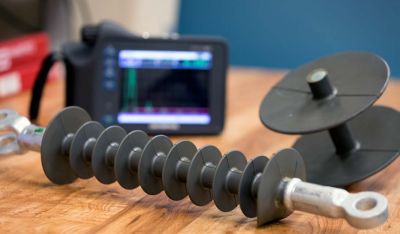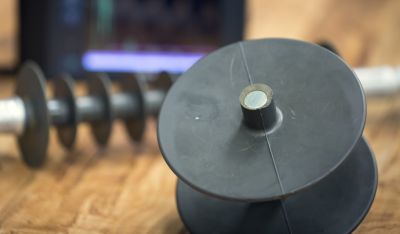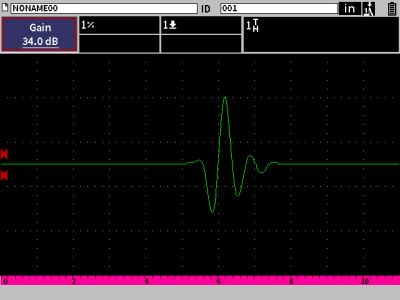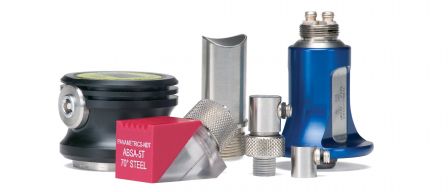Application
Verifying the integrity of bonding between the silicone skirts and the composite core of composite high-voltage power line insulators.
Background
The high-voltage pylon insulators used for power transmission lines and railroad traction power wires have traditionally been made of glass or ceramic, but many users are now switching to composite insulators because of their advantages with respect to weight, durability, and environmental performance. These insulators consist of a fiber-reinforced polymer (FRP) composite core coated with a layer of silicone rubber and bracketed with metal end fittings. Good bonding between the silicone and the FRP is essential for proper electrical performance, since bond failures may result in flashovers. Ultrasonic flaw detectors can be used to quickly and nondestructively check the integrity of these bonds, both at the manufacturing stage and in service.
 |  |
Equipment
Any of the Olympus EPOCH® series instruments, including the EPOCH 650 and EPOCH 6LT flaw detectors, can be used for this test, along with a small diameter contact transducer, such as a V112-RM (10 MHz, 0.25 in./6.25 mm diameter), that fits in the space between the flared skirts.
Procedure
The phase or polarity of an echo reflected from the boundary between two materials depends on the relative acoustic impedances (density × sound velocity) of the materials. When the first material has an acoustic impedance higher than the second, the echo polarity is negative. When the first material has an acoustic impedance lower than the second, the echo polarity is positive. Silicone has an impedance lower than fiberglass but higher than air. Thus a bonded silicone/FRP joint returns a positive echo, and a disbonded silicone/air boundary returns a negative echo. In this test, the flaw detector is set to RF display mode. The operator identifies the echo from the silicone/FRP boundary, sets it in the center of the screen, and sets gain to approximately 80% screen height. The display patterns should then be as follows:
Bonded Joint PositivePeak | Disbonded Joint Negative Peak |
If the thickness and/or concentricity of the silicone coating are of interest, they can be measured at the same time by calibrating the instrument to the velocity of silicone (typically about 1.48 mm/uS or .058 in/uS) and placing a measurement gate on the echo.





